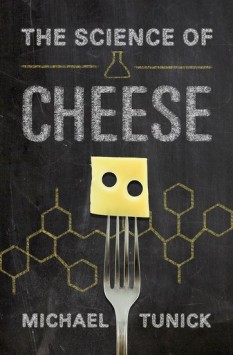FoodA Very Short Introduction
In this Very Short Introduction, Prof Lord John Krebs provides a brief history of human food, from our remote ancestors 3 million years ago to the present day.
In this Very Short Introduction, Prof Lord John Krebs provides a brief history of human food, from our remote ancestors 3 million years ago to the present day. By looking at the four great transitions in human food – cooking, agriculture, processing, and preservation – he considers a variety of questions, including why people like some kinds of foods and not others; how your senses contribute to flavor; the role of genetics in our likes and dislikes; and the differences in learning and culture around the world.
In turn he considers aspects of diet, nutrition, and health, and the disparity between malnutrition in some places and overconsumption in others. Finally, he considers some of the big issues – the obesity crisis, sustainable agriculture, the role of new technologies such as genetic modification of crops, and ends by posing the question: how will it be possible to feed a population of 9 billion in 2050, without destroying our natural environment?
Professor Lord John Krebs is the Principal of Jesus College Oxford. He has held positions at the University of British Columbia, University of Wales Bangor and Oxford University, where he was a Royal Society Research Professor from 1988-2005. Between 1994 and 1999 he was Chief Executive of the Natural Environment Research Council and from 200-2005 he was the first Chairman of the UK Food Standards Agency. He is an independent cross bencher in the House of Lords, where he chairs the Science and Technology Select Committee. He also chairs the UK Climate Adaptation sub-committee and is a Trustee of the Nuffield Foundation.
Global trade and cuisine: tomatoes in Italy
Cuisine has clearly changed in many parts of the world as a result of trade. The explorers who made contact with the New World brought tomatoes, potatoes, maize, quinoa, and avocados, as well as herbs such as coriander, back to Europe. Nowadays we associate chilli peppers and coriander with Asian cuisine, but in all probability these ingredients only arrived in Asia with the Portuguese explorers, who had encountered them in Latin America, in the 16th century. Before the arrival of the chilli, Asian cuisine used black or white pepper as a pungent spice. Chilli took over because it had a similar effect and was much easier to grow and therefore cheaper. The same is true of the other food plants that have been adopted outside their native country: if they were easy to grow, nutritious, or otherwise useful in cooking, they were often rapidly taken up.
However, the tomato in Italy is a remarkable counter example. Nowadays, Italian cuisine is often associated with the tomato: pasta al pomodoro, pizza Margherita, chicken cacciatore, and ragu alla Bolognese are just a few of the very familiar Italian dishes that include tomatoes. In the 1950s English cookery writer Elizabeth David criticized Italian cooking for containing too much tomato. But, remarkably, this is a tradition that dates back only as far as the 19th century. As the historian David Gentilcore has documented, there was a delay of more than 300 years between the arrival of the tomato in Italy in 1548, from the New World, via Spain, and its widespread use in cooking. The Italians adopted other New World crops such as maize, beans, chillis, and tobacco, before they accepted tomatoes.
Gentilcore suggests a number of possible reasons for this. The early tomatoes were sour because sweetness had not yet been bred into them. They were identified by botanists as belonging to the Solanaceae, the same family of plants as deadly nightshade (along with aubergines, potatoes, and tobacco) and were therefore treated with suspicion. One authority described them as ‘dangerous and harmful’ and their smell alone was said to cause ‘eye diseases and headaches’. Tomatoes were nevertheless grown as ornamental plants. The Italian name pomo d’oro (yellow fruit), as opposed to the Aztec ‘tomatl’, may have been adopted as an allusion to the tree that bears golden apples in Greek mythology.
The tomato’s acceptance as a food was gradual: in the mid 17th century there are references to its use as a condiment, to make a salsa with chilli peppers, and by the late 18th century recipes in cookery books were appearing. Methods of preserving tomatoes for use in the winter were also being developed. These included drying halved tomatoes (equivalent to modern sun-dried tomatoes) and making a paste from boiled tomato purée that was then dried in sheets in the sun. But dishes such as pasta with tomato sauce and pizza Margherita were probably 19th-century inventions, the latter formally named after the queen of Italy in 1889. The crucial development of canned tomatoes and tomato purée took place in Britain and the USA: in fact, the emigrant Italians influenced the development of tomato-based cuisine in the USA and the breeding of new varieties, which were later reimported into Italy.
In this chapter we have seen how our food preferences are affected by many influences, including our sensory receptors and brain, our genetic make-up, our infant and childhood exposure, as well as our social and cultural environment. As omnivores we have evolved to be both cautious about the potential risks associated with unfamiliar foods and flexible enough to embrace new food experiences. Food for us humans is more than fuel. It is part of our culture, our social life, our religions, and our pleasure.
But some worry about the dangers that might lurk on their plate. In one study that compared French and American attitudes to food, when asked what they associated with fried eggs, the French thought of breakfast, the Americans of cholesterol. In the next chapter I will examine some concerns about food, and ask whether or not they are justified.
Reprinted from FOOD: A Very Short Introduction by John Krebs with permission from Oxford University Press USA, copyright (C) 2013 by John Krebs.








Leave a Reply